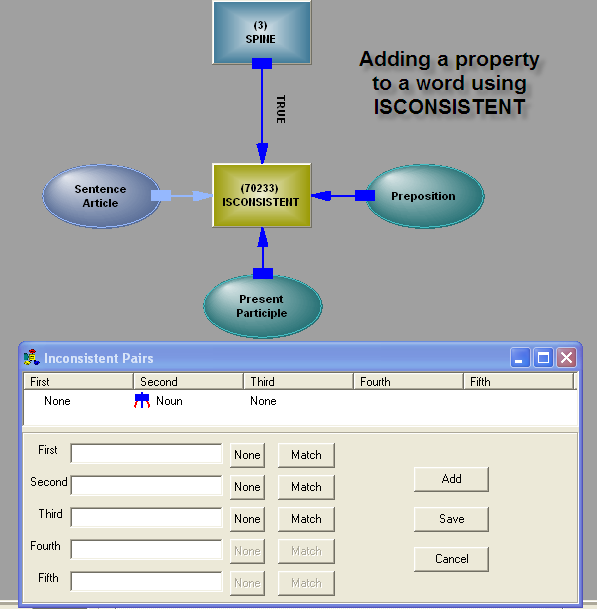
There are many special cases, right down to the individual word level, where general rules need to be augmented. To do this, we have an ISCONSISTENT operator. It can be used to add alternatives under particular circumstances so the property is not generally associated with the word. This operator asserts what a token can be, while NOTCONSISTENT asserts what it cannot be. For instance,
ISCONSISTENT(SentenceArticle, PresentParticiple, Preposition)
If the present participle is preceded by a sentence article, it must be acting as a noun. The ISCONSISTENT operator causes the present participle to become an invocation of Noun.
The contents of the operator are filled by using Properties in Editor to go to the operator, then Edit Node Details and the NotConsistent form in Network Display, as

The neighbouring word or words on either side and their types are used to add specific alternatives at the word level.
The individual match lines can be deleted or moved up or down in the list using a popup menu.
ISCONSISTENT can have up to five parameters, as
ISCONSISTENT(VerbAuxiliary, Verb, Noun, Noun, Preposition)
ANDWITH and NOTWITH can be used to filter the alternatives that arrive for pruning.
ANDPARSE
ANDWITH
NOCHILD
NOTCONSISTENT
NOTWITH
ONLYCHILD
PARSE
STRUCTURE1